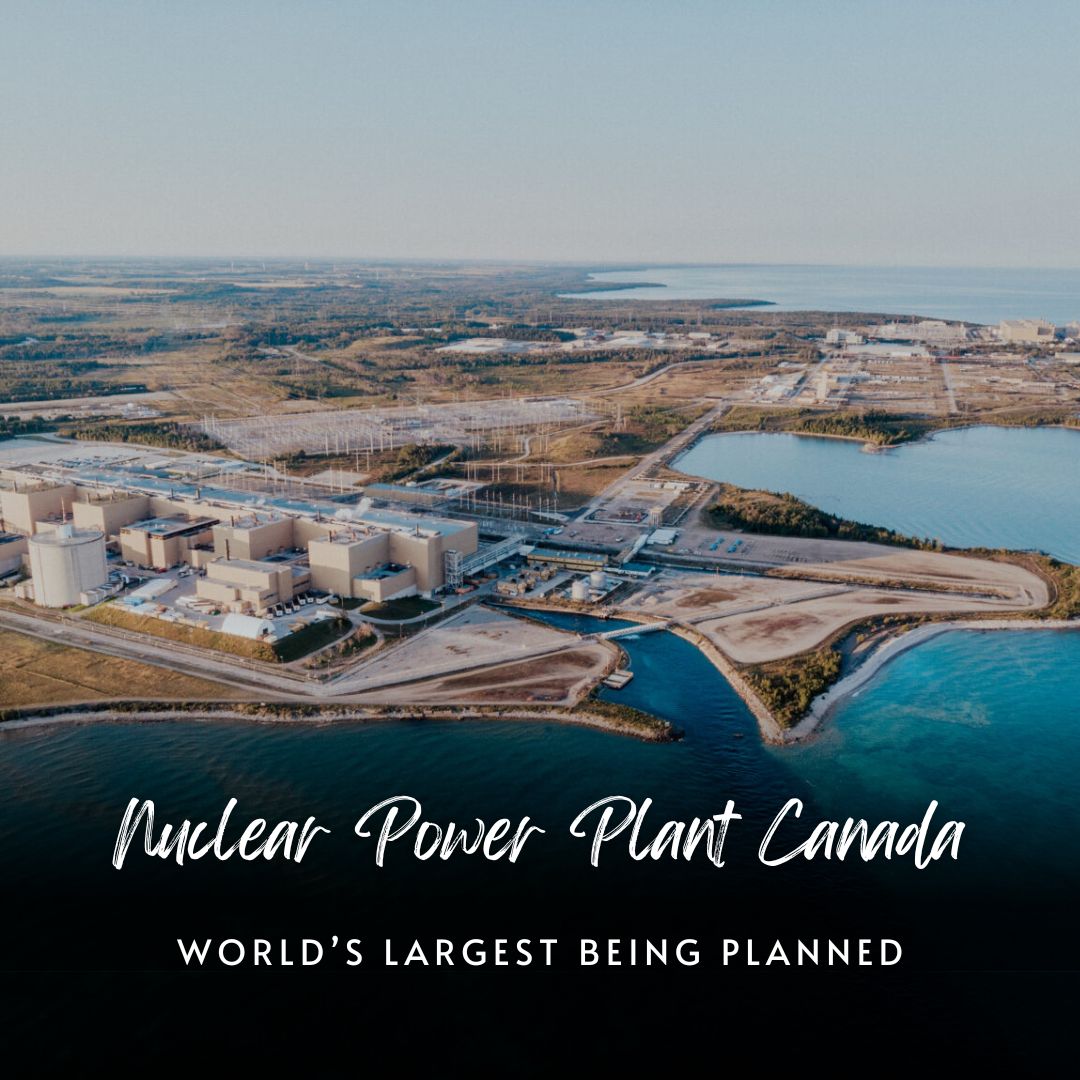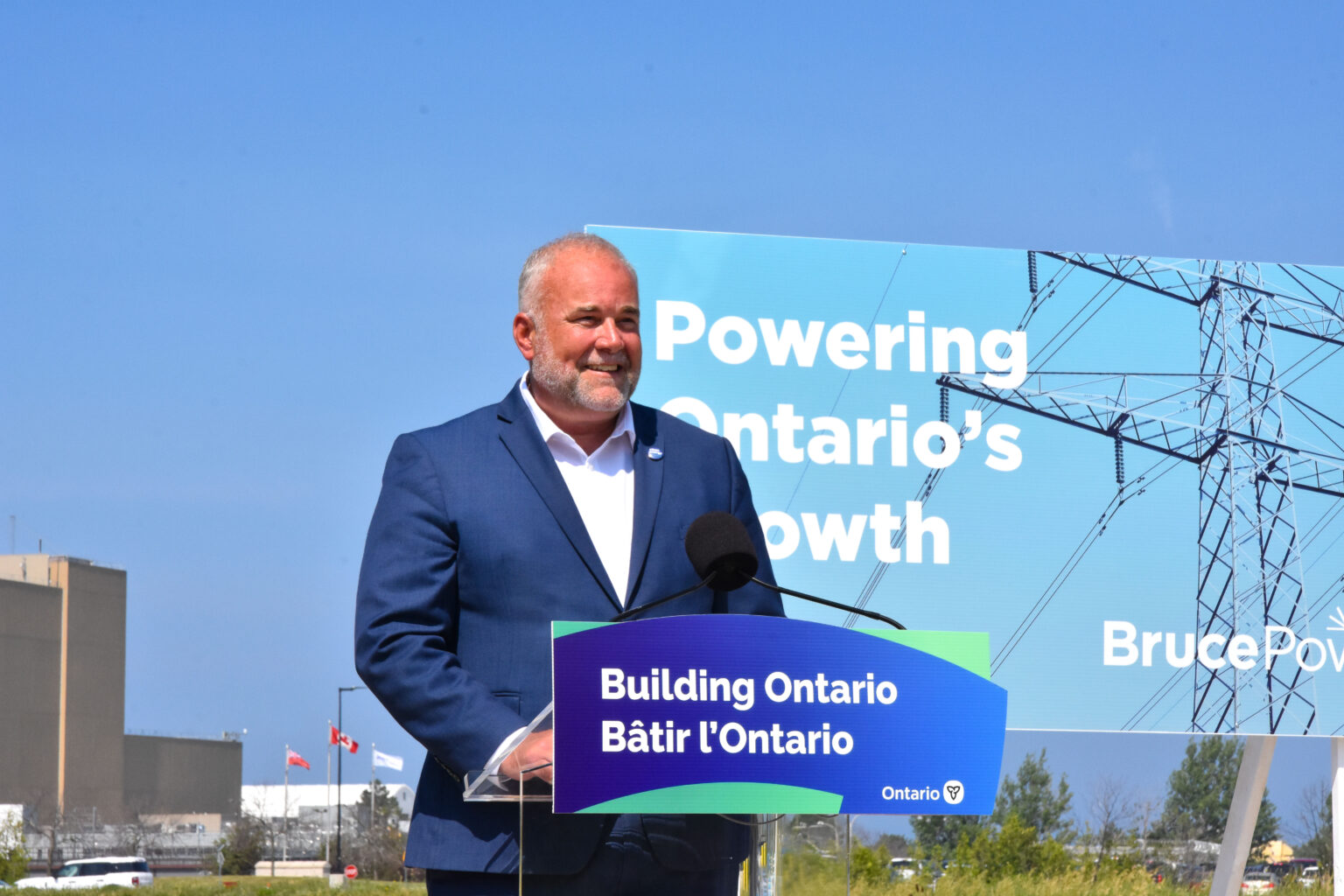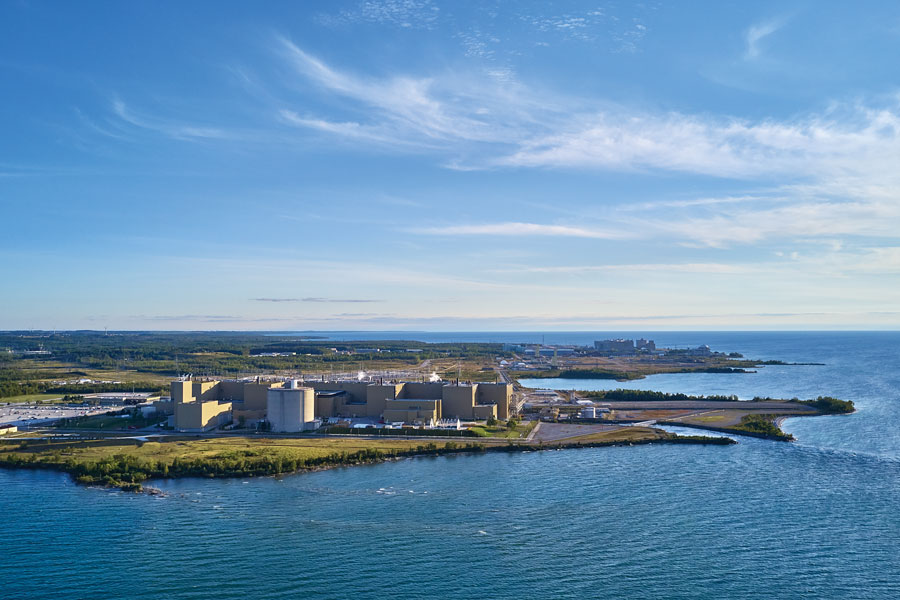Nuclear Power Plant Canada – World’s Largest Being Planned

Nuclear Power Plant Canada – World’s Largest Being Planned . Canada is planning to construct the largest nuclear power plant in the world as part of efforts to combat climate change and meet the rising demand for clean energy. Bruce Power, a Canadian utility company, has announced its intention to expand its existing nuclear facility in Ontario.
The government of Ontario has granted permission for Bruce Power to conduct an environmental assessment for the potential addition of up to 4.8 gigawatts of capacity. Currently, the plant has eight reactors with a total capacity of approximately 6.2 gigawatts, supplying 30% of the province’s electricity.
Source: Bloomberg

Nuclear Power Plant Canada – Ontario is seeking to enlarge Bruce Power
Ontario has unveiled its plans to expand the Bruce Power facility near Kincardine, which would mark Canada’s first significant construction of a large-scale nuclear plant in 30 years. This decision is driven by the province’s clean energy objectives and the growing demand for electricity. Ontario Energy Minister Todd Smith announced on Wednesday that the proposed expansion would generate up to 4,800 megawatts, equivalent to powering 4.8 million homes, effectively doubling the plant’s current output.
The new facility would be situated at Bruce Power’s existing site in Tiverton, Ontario, located on the shores of Lake Huron. Currently, the site consists of two generating stations with eight reactor units, with two reactors undergoing refurbishment as confirmed by the Canadian Nuclear Safety Commission. However, securing approval for the construction of the third generating station will be a lengthy process, likely taking around a decade and requiring the province to navigate various regulatory obstacles. These include soliciting public input, engaging in consultations with nearby communities, including First Nations, and adhering to the multi-stage licensing process of the Canadian Nuclear Safety Commission.
Negative Reputation of Nuclear Power
Nuclear power has suffered from a negative reputation due to high-profile accidents like Three Mile Island, Chernobyl, and Fukushima in the past five decades. However, as countries strive to reduce emissions and transition to low-carbon economies to mitigate climate change, nuclear energy has gained new supporters who view it as a viable alternative to fossil fuels. Dr. Chris Keefer, a Toronto emergency physician and president of Canadians for Nuclear Energy, a group advocating for new CANDU reactors, expressed surprise at the recent shift in perception. He emphasized the benefits of investing in nuclear technology, including clean air, medical isotopes, climate action, and positive outcomes for Ontario’s workforce.
Dr. Keefer highlighted the safety of Canada’s CANDU reactors, distinguishing them from nuclear technologies used in other countries. He asserted that CANDU reactors are among the safest in the world. Notably, these reactors utilize passive safety systems that rely on abundant water resources to keep the system cool for up to 12 days before the intervention of energy officials is necessary.
Nuclear Power Plant Canada – Accidents
Despite having a strong international reputation, Canadian nuclear reactors have experienced several incidents since the 1950s. One notable event was the world’s first nuclear reactor accident in 1952, where a research reactor in Chalk River, Ontario, suffered significant damage to its core due to overheating fuel rods. More recently, in 2009, the Darlington Nuclear Generating Station in the Greater Toronto Area accidentally released 200,000 liters of water containing trace amounts of radioactive isotopes into Lake Ontario when workers mistakenly filled the wrong tank with water. While safety concerns exist, critics such as Jack Gibbons, the chair of the Ontario Clean Air Alliance, argue that cost is also a significant factor. They believe that nuclear power is not a viable solution for addressing climate change and suggest exploring alternatives.
According to Gibbons, expanding the already largest nuclear station in the world, the Bruce nuclear station, does not make economic sense when there are cleaner, safer, and more cost-effective options available to meet electricity needs. He proposes lifting the moratorium on Great Lakes wind power imposed by the previous Liberal government in 2011, stating that wind power could fulfill more than 100% of Ontario’s electricity requirements at a lower cost than building a new nuclear reactor. Gibbons emphasizes that if Ontario aims to contribute to mitigating climate change, there are simpler zero-emission alternatives. He points out that constructing a new nuclear reactor would take 10 to 15 years, whereas wind and solar projects can be completed within 12 months or less, allowing for a quicker reduction in greenhouse gas pollution before 2030.
The construction of the proposed nuclear plant would require federal approvals, and Ontario’s energy minister, Todd Smith, announced that Bruce Power would initiate community consultations and conduct an environmental assessment to determine the feasibility of the project. This announcement aligns with the province’s broader strategy of presenting itself as open for business, aiming to create jobs and opportunities through initiatives like EV battery manufacturing, critical minerals mining in the northern regions, and adapting environmental safeguards to foster economic growth.
Source: CBC News Canada
Bruce Nuclear Power Plant Canada

Bruce Power is a Canadian partnership consisting of TC Energy, Ontario Municipal Employees Retirement Systems (OMERS), the Power Workers’ Union, and The Society of United Professionals. The majority of the company’s employees also have ownership stakes in the business.
Established in 2001, Bruce Power is the only private sector nuclear generator in Canada, responsible for generating 30% of Ontario’s power annually. Ontario’s Long-Term Energy Plan relies on Bruce Power to provide a dependable and carbon-free source of affordable energy until 2064. To fulfill this commitment, Bruce Power has entered into a long-term agreement with the province to refurbish six out of its eight units, investing $13 billion of private funds into these publicly owned assets. The Life-Extension Program initiated by Bruce Power will generate and sustain 22,000 jobs each year while contributing $4 billion to Ontario’s economy annually.
With a workforce of over 4,000 employees, Bruce Power has been one of the largest investors in Ontario’s electricity infrastructure since its establishment in 2001. Despite the private ownership structure, the Bruce Power site remains publicly owned, as it is leased under a long-term arrangement. Bruce Power takes responsibility for funding infrastructure upgrades, making annual rent payments, and covering the costs of waste management and future decommissioning.
The site is located on the eastern shore of Lake Huron near Tiverton, Ontario, situated within the traditional lands and treaty territory of the Saugeen Ojibway Nation (SON), which includes the Chippewas of Nawash and Saugeen First Nation. Bruce Power is dedicated to respecting and honoring Indigenous history and culture and is committed to advancing reconciliation and mutual respect with the Saugeen Ojibway Nation (SON), Georgian Bay Métis Nation of Ontario (MNO), and the Historic Saugeen Métis. The company aims to serve as a positive example within the community and the industry.
Source: Bruce Power
Nuclear Power Plant Canada Locations
Commercial nuclear power generation in Canada has been in operation since the early 1960s, with five plants located in three provinces. These plants collectively house 22 nuclear power reactors, contributing approximately 15 percent of the country’s electricity. The Canadian Nuclear Safety Commission (CNSC) plays a crucial role in ensuring the safe operation of these facilities. Their team of technical experts and onsite inspectors maintain rigorous oversight to protect the public and the environment.
The operating nuclear facilities in Canada are as follows:
- Bruce Nuclear Generating Station in Ontario
- Pickering Nuclear Generating Station in Ontario
- Darlington Nuclear Generating Station in Ontario
- Gentilly-2 Nuclear Facility in Québec (recently decommissioned)
- Point Lepreau Generating Station in New Brunswick
It’s important to note that all nuclear power reactors in Canada utilize the CANDU (Canadian Deuterium-Uranium) technology. These reactors are pressurized heavy water reactors that employ natural uranium as fuel and heavy water as both a coolant and moderator.
Source: Government of Canada
Icon of the Seas World’s Largest Cruise Ship





